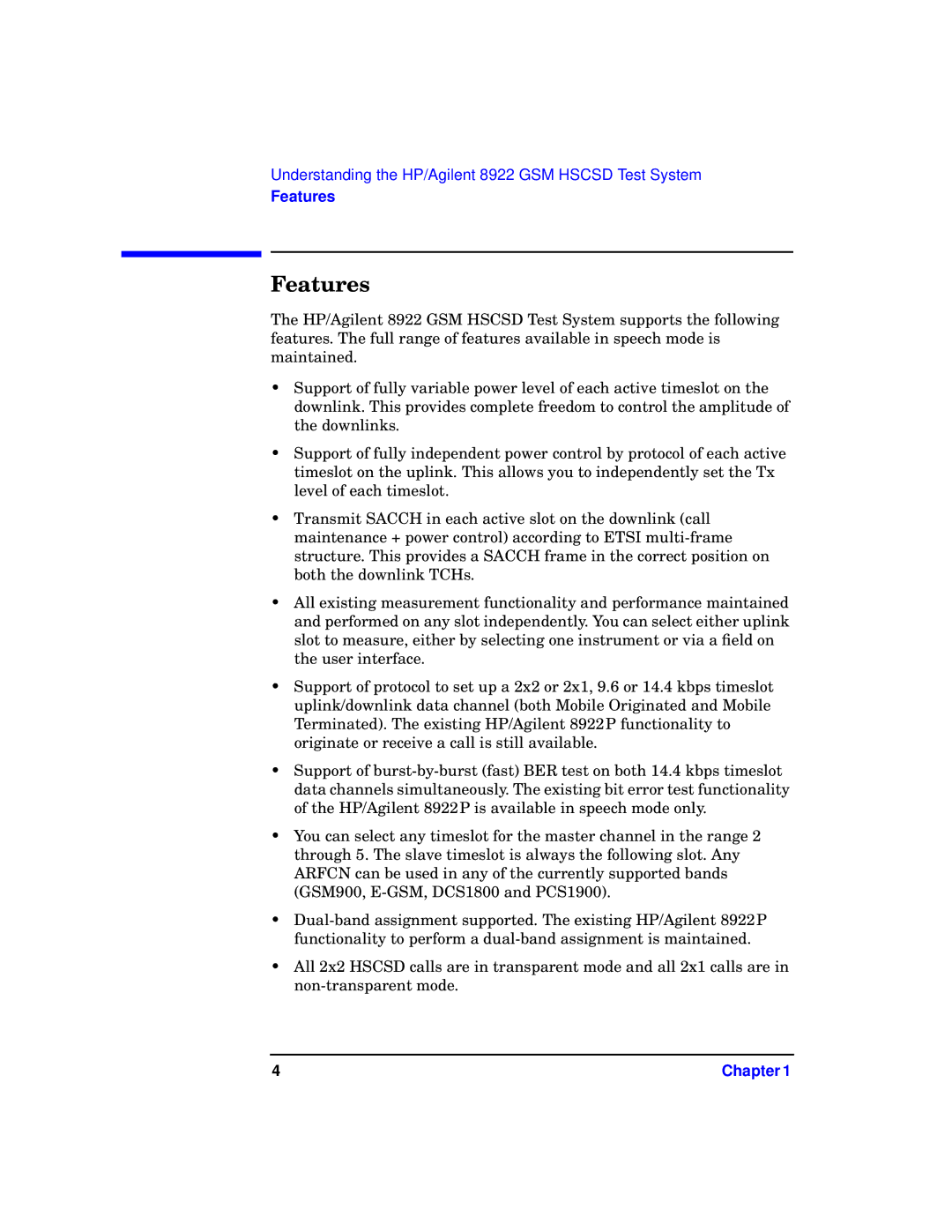
Understanding the HP/Agilent 8922 GSM HSCSD Test System
Features
Features
The HP/Agilent 8922 GSM HSCSD Test System supports the following features. The full range of features available in speech mode is maintained.
•Support of fully variable power level of each active timeslot on the downlink. This provides complete freedom to control the amplitude of the downlinks.
•Support of fully independent power control by protocol of each active timeslot on the uplink. This allows you to independently set the Tx level of each timeslot.
•Transmit SACCH in each active slot on the downlink (call maintenance + power control) according to ETSI
•All existing measurement functionality and performance maintained and performed on any slot independently. You can select either uplink slot to measure, either by selecting one instrument or via a field on the user interface.
•Support of protocol to set up a 2x2 or 2x1, 9.6 or 14.4 kbps timeslot uplink/downlink data channel (both Mobile Originated and Mobile Terminated). The existing HP/Agilent 8922P functionality to originate or receive a call is still available.
•Support of
•You can select any timeslot for the master channel in the range 2 through 5. The slave timeslot is always the following slot. Any ARFCN can be used in any of the currently supported bands (GSM900,
•
•All 2x2 HSCSD calls are in transparent mode and all 2x1 calls are in
4 | Chapter 1 |
